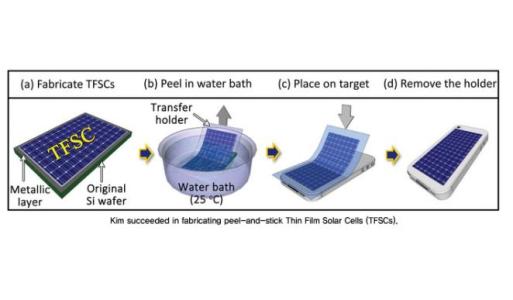The cost and complexity associated with fixing and managing the unwieldy solar panels on rooftops has been hindrance to the wider adoption of solar energy.
A combined research by Hanyang University and Stanford University researchers has an answer to this: the researchers have come up with a solar sticker that can be stuck on virtually any surface!
The solar sticker, according to Cleantechnica, is a new Silicon wafer that can be peeled and stuck to a surface. It’s as simple as sticking a name slip on a notebook. The sticky solar wafer can be attached to any surface, the researchers claim.
The credit of this invention goes to professor Dong Rip Kim of the Department of Mechanical Engineering and Stanford team led by professor Xiaolin Zheng. They have named this technology as peel-and-stick thin film solar cells (TFSCs).
When developed, the peel-and-stick thin film solar cells have the potential to bring down the cost of solar installations to a minimum. Since it does not require additional surface and supporting structures, solar developers can save on manufacturing and installation. The technology also helps drastically reduce the workforce involvement in solar installations.
The main aim of the research was to bring down the price of solar cells and make them more flexible. According to the scientists the rigidity and unwieldiness of solar cells have largely contributed for the slow adoption of solar.
The scientists have used the same fabrication method for these peel-and-stick solar cells but has added a metal layer between the fabricated a-Si:H TFSCs and the underlying Si/SiO2 wafer. After several attempts Kim and his colleagues found a method to reliably peel the fabricated TFSCs from the Si/SO2 wafer by using water penetration between the metal layer and the SiO2 layer on the wafer.
The new technology will broaden the application spectrum of solar cells, according to the scientists. The technology can also be expanded to new appliances like flexible displays.
Image credit: Hanyang University

